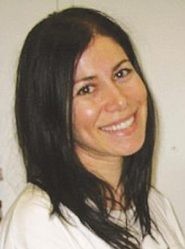When Jew-hatred makes media uneasy
The recent and rapid escalation of anti-Semitic attacks in the New York area is horrifying, almost reaching epidemic levels. Since most of the perpetrators do not fit the profile of white supremacists, they don’t fit the media’s narrative or bias and so are relegated to footnotes.
It is disturbing that the media calls out Jewish hate with gusto when it fits its narrative bias, yet displays a degree of cold restraint when it doesn’t. In the American progressive narrative, the only terrorists worth noting are white nationalists. As Seth Franzman put it aptly, there is “inconvenient anti-Semitism.”
Of course, when the scale of the story is so big, it makes the news — for example, when the Jersey City kosher market was attacked. And tragically also on the seventh night of Chanukah, when a machete-wielding attacker barged into the private home of Rabbi Chaim Rottenberg’s candlelighting celebration. But in the intervening weeks between these two events, there was a continuous string of anti-Semitic incidences. Where were the media then?
Change is not necessarily seismic. It can happen in small, gradual, incremental steps, until one day you wake up and realize you are living in a different reality.
The Jewish American reality I grew up in didn’t include Chanukah lightings bloodied by machete-wielding anti-Semites. When I was a child and even all the way into adulthood, synagogue doors were not locked. Now, many are.
In Monsey, the target site shifted from the public domain of the synagogue to the private domain of a Jewish home. Does this mean, G-d forbid, that the conversation will shift from shul security to mezuzzahs, the symbol that announces a Jewish home? Where does this story end?
The one constant in these attacks, be it Tree of Life in Pittsburgh, Chabad of Poway, California, and now Monsey, is the deep inspirational response of Jewish resilience in the face of such evil.
Rabbi Rottenberg continued with his Chanukah menorah lighting after the attack. To possess the emotional and spiritual presence of mind to continue on, to kindle a menorah in defiance, not to surrender to an evil and threatening darkness, is nothing short of astounding.
After all is said and done about adding more security and preventative measures, this is really the only “weapon” we have left. Our light. Our Judaism. Our faith. Our resilience.
There’s a famous philosophical debate between Talmudic colleagues, the school of Hillel and the school of Shammai regarding the sequence of lighting the Chanukah menorah. The school of Shammai posits: The menorah ought to be lit in full on the first night, coming out of the gate swinging with all eight flames burning bright, and then, as the days of Chanukah pass by, one candle, one flame at a time, should be deducted, to reflect the passage of the holiday. The school of Hillel disagrees. The menorah ought to be lit one candle at a time, day by day, adding one candle each night, increasing the light over the darkness. “Ma’alin ba-kodesh ve-ein moridin, in matters of sanctity, we always increase, we do not decrease.”
Of course, Jewish law follows the opinion of the school of Hillel. This is our true ammunition. One candle at a time, overcoming the darkness in the world with the light of our Judaism.
Our candle will take different forms at different times. Here is the form it takes this very week, mere days after the Chanukah attack in Monsey: Siyum HaShas, a gathering of more than 100,000 Jews in New York alone to mark the 13th cycle of the study of the daily Talmud folio.
Instead of a gathering of multitudes that could potentially lead to maddening crowds and perhaps panic, there would be the silent Amidah, when amidst the multitudes you can hear a pin drop, just before that you can hear the electrifying and thundering in unison “Yehei Shmei Rabbas” of more than 100,000 Jews embodying a living light of Jewish resilience and tradition.
Ultimately, this is the only real light that holds the power to dispel and drown out the darkness of anti-Semitism. Ma’alin ba-kodesh.Copyright Intermountain Jewish News

 46.0°,
Light Drizzle
46.0°,
Light Drizzle 




